As a science writer, much of my day entails reviewing and revising marketing materials and technical literature about complex life science research products. I take for granted the understanding that I, my colleagues and our customers have of how these technologies work. This fact really struck me as I read an article about research to improve provider-patient communication in healthcare settings.
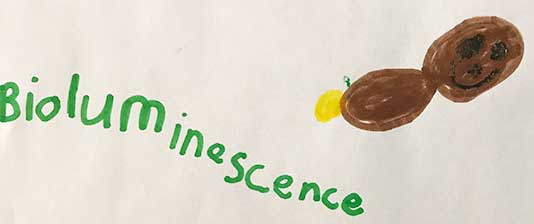
The researchers completed an analysis revealing that patient information materials had an average readability at a high school level, while the average patient reads at a fourth-grade level. These findings inspired the researchers to conduct a study in which they enlisted the help of elementary students to revise the content of the patient literature after giving them a short lesson on the material.
The resulting content did not provide more effective ways to communicate indications, pre- and post-op care, risks or procedures—that wasn’t really the point. Instead, the study underscores the important connection between patient literacy and health outcomes. More specifically, a lack of health literacy is correlated with poor outcomes and increased healthcare costs, prompting action from the US Department of Health & Human Services.
While healthcare information can be complex and full of specific medical terminology, I recognized that a lot of the technical and marketing information we create for our products at Promega has similar features. Wouldn’t it be interesting to find out how descriptions of some of our biggest technologies translate through the eyes and mouths of children?
After enlisting some help from my colleagues, I was able to catch a glimpse of how our complex technologies are understood by the little people in our lives. The parents and I explained a technology and then had our child provide a description or drawing of what they understood.
A lot of the responses revolved around the concept of bioluminescence, the biological phenomenon that is the foundation of so many of our assays. When asked to explain bioluminescence, our youngsters really delivered.
When animals light up by their selves and it’s kinda like fireflies. —Anikka, 5
There’s bioluminescent algae, you can see it in this movie call Moana …and there is bioluminescent bacteria anglerfish [whose] lure glows and they eat prey because there’s bioluminescent bacteria in their lure. When the fish see it, they swim towards it and the anglerfish snaps them up. Bioluminescence is basically something that glows naturally, not like light bulbs…so fireflies for example. —Elena, 11
Note: The test subject made it clear that this message was NOT sponsored by Moana!
Not surprisingly, kids can understand the concept of bioluminescence—but can they explain how scientists use it?
So bioluminescence has luciferase in it…so you would put luciferase into a container with some other cells and put some proteins that turn the luciferase on…when it is reacting to a certain environment or like light then you would see the results for yourself if the cells start to glow. If it’s glowing it would tell you that the cells are either nervous, like they’re ready to fight, they’re strong or they’re making you fast or they help you stand really still. [Scientists] look at the reaction, at luciferase, and the different types of cells luciferase is connected to, to see the results…like science! —Elena
Okay, that was pretty good. Maybe talking about some specific tools and technologies, like the Maxwell® Instruments or NanoLuc® Luciferase, will trip them up.
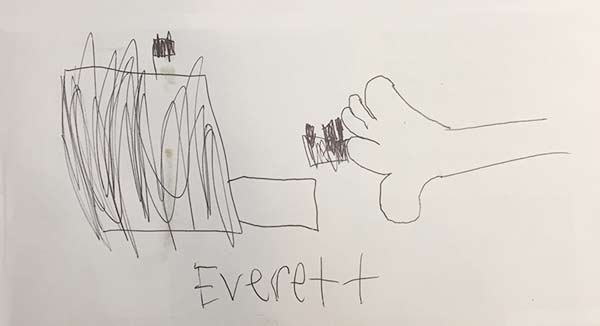
[The Maxwell] is a machine that presses stuff down so you can get work done quicker. It look[s] like a printer. [NanoLuc® technology] is something that could track stuff in your body or in animals or cells. —Everett, 7
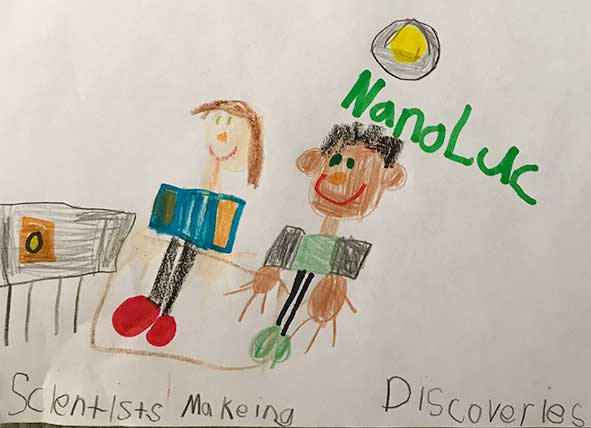
NanoLuc is some kind of chemical that is light and there are lots of those in like the ocean. And there is one fish that has that little pokey thing with the light on it. [Scientists can] tell if the chemicals are healthy or sick or doing something and stuff like that. Scientists making discoveries. —Anikka
While these interpretations lack precision and depth, they more than make up for it with imaginative storytelling that still manages to convey the gist of the technologies. One of our newest technologies, the HiBiT detection system is quite complex, but 5-year-old Jeremy’s beautifully minimalistic representation of the HiBiT and LgBiT complementary subunits (that glow when they come together) is remarkably accurate.
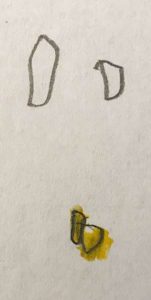
I was impressed with the explanations all of the kids provided, considering how little instruction they were given. But eventually, it became clear that some of the technology was just too confounding.
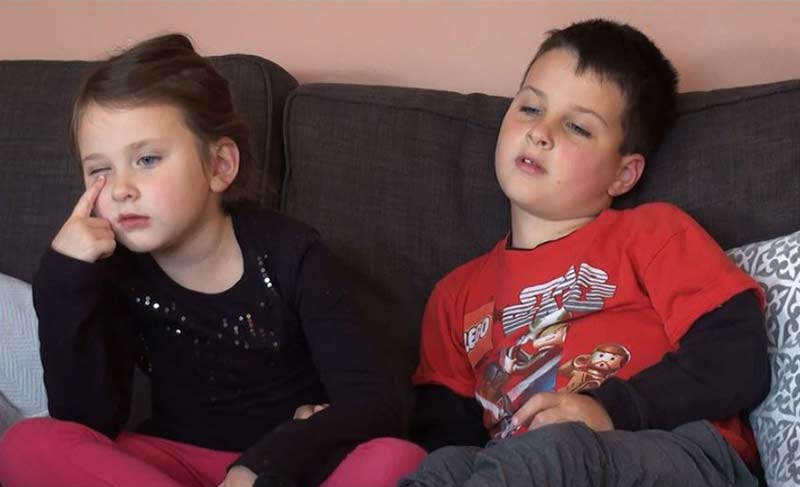
For one of our test subjects, this exercise culminated with her making it abundantly clear that she’d had enough and was ready to move on to more interesting topics.
I know snow is ice crystals and banana butts! —Margot, 5
Do you have any drawings or quotes from kids about your research? Please share them with us.
Latest posts by Darcia Schweitzer (see all)
- Cytochrome P450 Inhibition: Old Drug, New Tricks - May 5, 2022
- Firefly Luciferase Sheds Light on Development of New Malaria Treatments - April 5, 2021
- How to Train Your Instrument Service Team in a Pandemic - February 1, 2021
